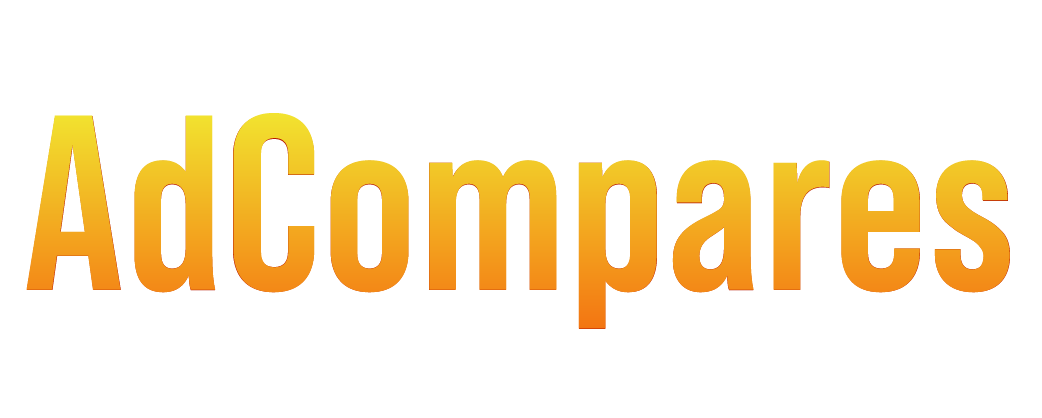Starting a women’s blog in 2025 is a powerful way to share valuable insights, connect with like-minded individuals, and inspire your readers through meaningful content. Whether your blog focuses on wellness, career advice, or lifestyle tips, this guide will walk you through each step to create a blog that doesn’t just attract readers but builds a supportive community.
How to Start a Women Blog (9 Easy Steps)
1. Define Your Blog’s Purpose and Niche
The first step in creating a blog that resonates is to define your niche and purpose. A well-defined niche helps you focus your blog’s content, ensuring it attracts a dedicated readership. Here are some popular niches for women’s blogs in 2024:
- Wellness and Self-Improvement: Focus on topics like mental health, self-care routines, mindfulness practices, and stress management techniques. Posts like “5 Daily Mindfulness Practices” or “Creating a Self-Care Routine” can resonate with readers.
- Career and Financial Independence: Discuss job-hunting tips, career development, work-life balance, and financial empowerment. Articles like “Smart Budgeting for Beginners” or “How to Navigate Workplace Challenges” can provide value.
- Motherhood and Parenting: Cover parenting tips, motherhood challenges, and support for mothers. Topics like “Balancing Work and Family Life” or “Gentle Parenting Tips” can appeal to a wide readership.
- Beauty and Fashion: Share beauty routines, sustainable fashion tips, skincare advice, or seasonal fashion trends. Topics like “Building an Ethical Wardrobe” or “Effective Skincare for Busy Women” are popular.
- Lifestyle and Hobbies: Focus on travel, cooking, DIY crafts, or home décor for readers who enjoy lifestyle inspiration.
Purpose of the Blog
Define the mission of your blog clearly. For instance, a blog centered on financial independence for women could provide actionable steps like budgeting, debt reduction, and investing tips. Establishing a clear purpose helps keep your blog focused and engaging for readers.
2. Choose a Memorable Domain Name and Reliable Hosting Provider
Selecting a Domain Name
A memorable domain name helps your blog stand out. It should be simple, descriptive, and unique. For example:
- Wellness blog: “MindfulWomenHub.com” or “LiveBalanced.com”
- Finance blog: “SmartMoneyHer.com” or “WomenWealthHub.com”
- Lifestyle blog: “InspiredHerLife.com” or “SheThrives.com”
Selecting a Hosting Provider
Reliable hosting is essential for accessibility and speed. Leading options for 2025 include:
- Bluehost: Affordable, with strong customer support and high uptime.
- SiteGround: Known for excellent WordPress integration and fast performance.
- HostGator: Budget-friendly with flexible options as your blog grows.
Choosing a CMS (Content Management System)
WordPress is popular for its flexibility and SEO support. Other options include:
- Wix: User-friendly with a drag-and-drop editor.
- Squarespace: Beautiful templates, ideal for visually appealing blogs.
- Blogger: Google’s platform, easy to use but limited in customization.
3. Design a User-Friendly Blog Layout
Choosing a Theme
Your theme should be visually appealing and mobile-responsive. Themes like Astra, Divi, and Blossom Feminine offer customizable and reader-friendly designs. Make sure your theme matches your niche, with minimalist designs for career-focused blogs or vibrant layouts for beauty and lifestyle blogs.
Page Structure
Organize essential pages to make your blog easy to navigate:
- Home Page: Introduce readers to main topics and feature popular posts.
- About Page: Explain your blog’s purpose and share your story.
- Contact Page: Include a form for reader inquiries.
- Categories: For multi-topic blogs, group related posts into categories like “Wellness,” “Career,” and “Lifestyle.”
Creating a Logo and Branding
Consistent branding builds recognition and trust. Use design tools like Canva to create a logo, choosing colors and fonts that align with your blog’s identity.
4. Develop Valuable, Empowering Content
The heart of a successful blog is high-quality content that engages and empowers readers. Consider these content types:
- How-to Guides: Offer actionable advice on specific topics, like “How to Create a Balanced Budget” or “Ways to Practice Self-Care.”
- Personal Stories: Share your experiences to connect with readers.
- Interviews: Featuring experts on relevant topics adds credibility and variety.
- Listicles: These quick-read posts, like “10 Tips for Working Moms” or “5 Essential Skincare Tips,” are popular and engaging.
Content Planning and Scheduling
Create an editorial calendar to maintain consistency. Whether you publish weekly, biweekly, or monthly, consistent posting helps build reader loyalty.
Maintaining an Empowering Tone
Write with a supportive tone to make readers feel encouraged and motivated. Instead of instructing, frame suggestions positively, like “Here’s how you can…” to empower readers.
5. Leverage SEO for Reach and Visibility
Keyword Research
Effective SEO starts with keyword research. Tools like Google Keyword Planner, Ahrefs, and Ubersuggest help you find relevant keywords. For a wellness blog, you might focus on keywords like “stress management tips” or “self-care ideas.”
On-Page SEO
To optimize each post:
- Title Tags: Use keywords in titles for discoverability.
- Meta Descriptions: Write summaries that include keywords for click-through appeal.
- Internal Links: Link related posts to keep readers engaged and improve SEO.
- Image Alt Text: Use descriptive keywords to make your images more accessible.
Off-Page SEO
Building backlinks from reputable websites boosts your blog’s authority. Guest posting on established blogs can improve your SEO and reach.
Technical SEO
Make sure your blog is mobile-friendly, loads quickly, and follows security best practices. WordPress plugins like Yoast SEO simplify on-page optimization and provide SEO guidance.
6. Utilize Social Media to Grow Your Audience
Choosing the Right Platforms
Identify where your audience is most active. For instance:
- Instagram: Great for visually driven content and engaging stories.
- Pinterest: Effective for lifestyle and wellness content.
- LinkedIn: Ideal for career and finance-related topics.
Social Media Content Ideas
Keep followers engaged with a variety of content, including:
- Stories and Reels: Share behind-the-scenes content or quick tips.
- Infographics: Provide value with visually engaging, informative graphics.
- Live Q&A Sessions: Interact with your audience directly and build community.
Building an Email List
A newsletter helps build a loyal audience. Offer incentives, like a free e-book or resource, to encourage sign-ups. Platforms like Mailchimp and ConvertKit are easy to use for beginners.
7. Monetize Your Blog Strategically
Affiliate Marketing
Promote relevant products and earn commissions through affiliate programs. Examples:
- Amazon Associates: Versatile, with products for various niches.
- ShareASale: Great for lifestyle, beauty, and wellness items.
- CJ Affiliate: Offers a wide range of brands and products.
Sponsored Content
Collaborate with brands to create sponsored posts. Always ensure sponsored content aligns with your blog’s values to maintain reader trust.
Digital Products
Selling digital products, like e-books or courses, can be lucrative. Examples include “Self-Care Guide,” “Personal Finance for Beginners,” or “Budget Planner for Moms.”
Advertising
Programs like Google AdSense allow for monetization with ads. For high-traffic blogs, networks like Mediavine offer better revenue options.
8. Track Your Blog’s Performance
Key Performance Metrics
Use Google Analytics to track important metrics:
- Page Views: Assess traffic trends.
- Bounce Rate: Identify pages with low engagement.
- Average Time on Page: Determine which content retains readers.
Improving Based on Data
Analyze which topics perform best and adjust your content strategy accordingly. For example, if wellness content resonates, you might focus more on related topics.
9. Consistency is Key to Success
Success in blogging requires dedication and consistent effort. Here are some tips:
- Update Content Regularly: Refresh older posts with current information.
- Engage with Readers: Respond to comments and engage on social media.
- Collaborate with Other Bloggers: Joint content creation or guest posts can expand your reach.
Conclusion
Starting a women’s blog in 2025 offers a powerful way to impact readers’ lives, sharing experiences and fostering a community. With a consistent strategy, valuable content, and genuine engagement, you can create a successful blog that empowers, educates, and inspires women around the world.
FAQs on Starting a Women Blog
How much does it cost to start a blog?
The cost varies based on the hosting provider, domain name, and additional plugins or tools. For a basic setup, expect to spend around $50 to $100 annually on hosting and the domain name, with additional costs for premium themes or tools.
Do I need to know coding to start a blog?
No coding knowledge is required to start a blog. Platforms like WordPress, Wix, and Squarespace offer user-friendly, drag-and-drop editors that allow you to create and customize your blog without coding.
How long does it take to see traffic on my blog?
It usually takes several months to build consistent traffic. Focus on creating valuable content, promoting through social media, and optimizing for SEO to gradually attract readers.
Can I make a living from blogging?
Yes, many bloggers earn a living through monetization strategies like affiliate marketing, sponsored content, and selling digital products. However, it requires time and consistent effort to reach a substantial income level.
How often should I post new content?
Consistency is more important than frequency. Aim to post at least once a week or biweekly to maintain reader interest and build a loyal following.
What are some common challenges in blogging?
Common challenges include finding a niche, creating high-quality content regularly, driving traffic, and managing monetization. Staying motivated and engaged with your readers can help overcome these challenges.
Is it essential to use social media for blogging success?
While not strictly necessary, social media significantly enhances your reach and engagement. Platforms like Instagram, Pinterest, and LinkedIn can drive traffic and build community around your blog.

